Non-Binary
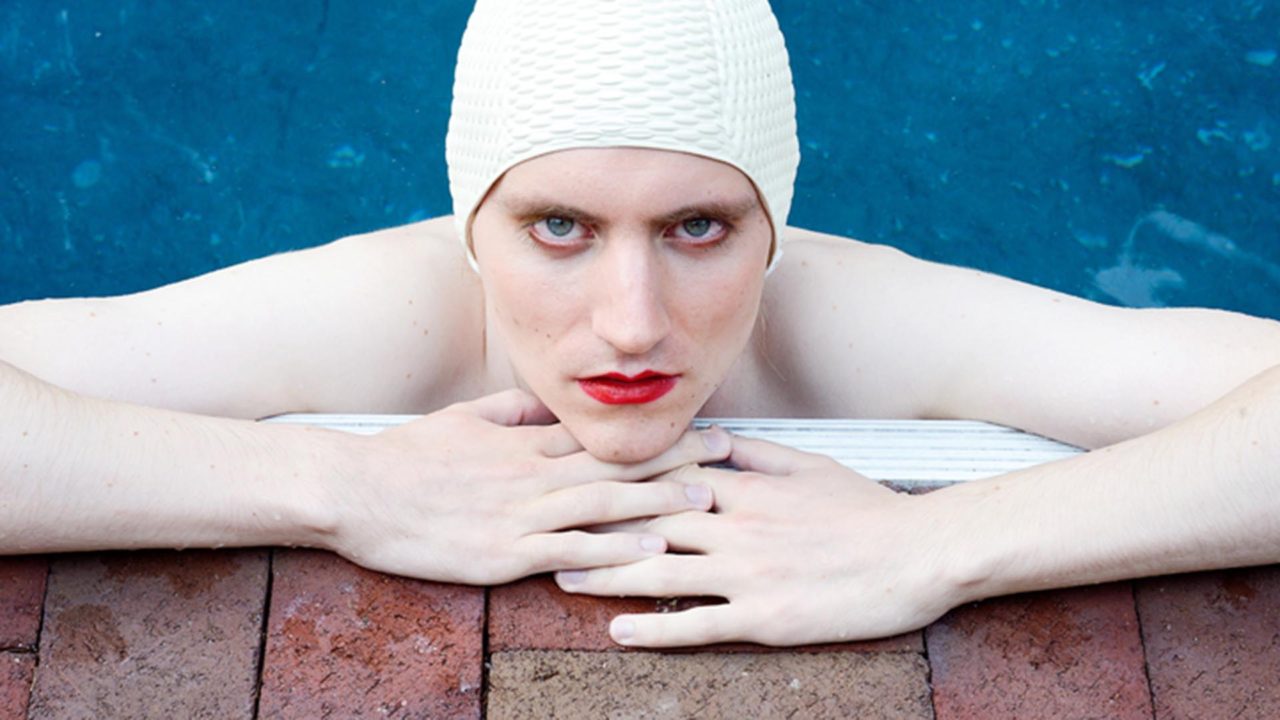
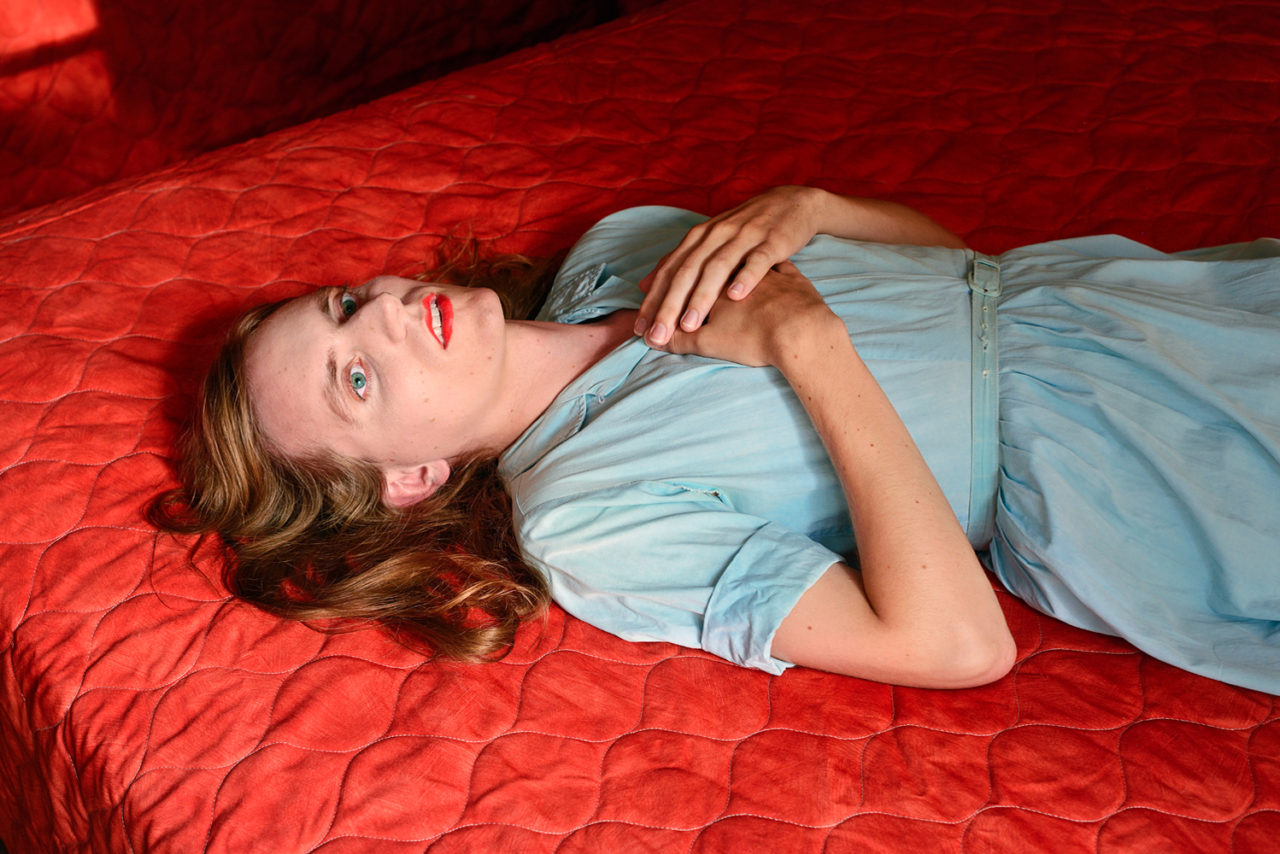
Lissa Rivera
New York, USA
Beautiful Boy
‘Beautiful Boy’ is an ongoing project focusing on my domestic partner as muse, documenting our exploration of femininity and the nuances of photography as a transformative medium. I am using photography as a testing ground for my partner, who is genderqueer, to visualize multiple feminine identities. The photographs provide a canvas to investigate the visual language of womanhood that I was raised with, and that my partner is only beginning to explore. Through watching movies, listening to music and viewing countless photographs, I‘ve absorbed an archive of techniques to share. The photographs recall childhood fantasies of dressing up, tapping into deep-seated narratives about desire, beauty, freedom and cultural taboo. Although our emotional relationship is private and real, we perform a romanticism that is obsessive and decadent. The fantasy of dressing up transforms the experience of being photographed into one that fuses identity-creation with image-creation.
Lissa Rivera
New York, USA
BEAUTIFUL BOY
« Beautiful Boy »’ est un projet en cours qui met l’accent sur ma conjointe en tant que muse, documentant notre exploration de la féminité ainsi que les nuances de la photographie comme médium transformateur. J’utilise la photographie comme banc d’essai de manière à ce que ma conjointe, qui est intergenre, visualise de multiples identités féminines. Les photographies fournissent une toile de fond pour examiner le language visuel de féminité avec lequel j’ai grandi, mais que ma conjointe commence seulement à explorer. En regardant des films, en écoutant de la musique et en étudiant d’innombrables photographies, j’ai pu absorbé une véritable archive de techniques à partager. Les photographies rappellent les désirs d’enfant de se déguiser, explorant ainsi des procédés narratifs de désir, de beauté, de liberté et de tabous culturels bien ancrés. Bien que notre relation affective soit privée et réelle, nous jouons un romantisme obsessionnel et décadent. Le fantasme de se costumer transforme l’expérience d’être photographié en une expérience qui relie la création d’identité à la création d’image.
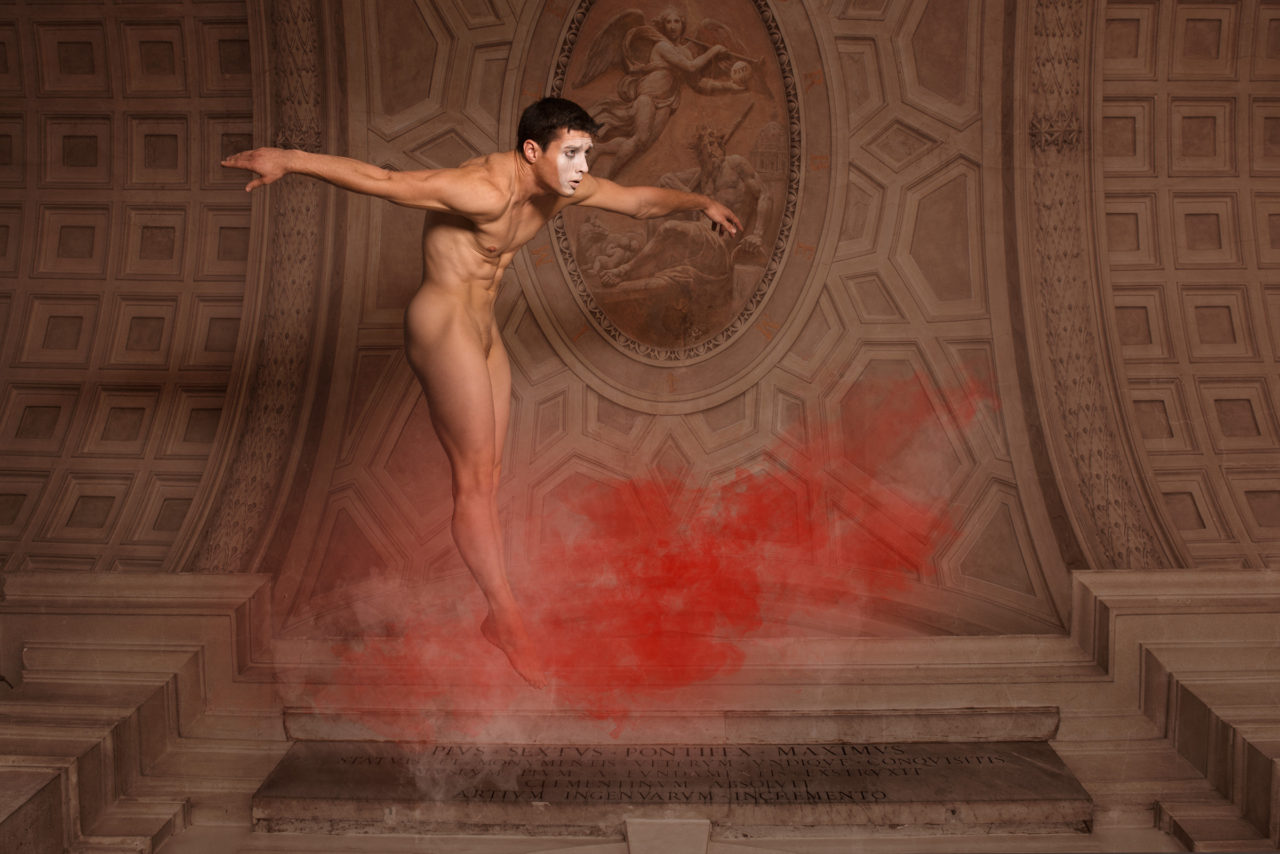
Damian Siqueiros
Montreal, Canada
TRANSformation
How can we see what is invisible? How can we see what has been deemed “obscene” in its etymological meaning: out of the scene? I can only try to unveil what has been there for us to see but we were so caught up walking a straight line that the eyes saw it but our minds simply ignored it.
TRANSformation doesn’t deal exclusively with transsexuality but with the intriguing questions that arise from it. Questions about what sex and gender mean and that would be unimaginable without the existence of transgender bodies.
Trans-bodies are the vessel for asking larger questions about social need to superimpose the myths of gender unto the body according to its sex. The process occurs almost seamlessly as long as sex and gender align in a hetero-normative and binary way. Destabilization, conscious or unconscious, arises from discrepancies between the anatomy and its relationship with social norms on gender. TRANSformation challenges the idea of the seemingly natural concordance between sex and gender: Female equals woman and male equals man, and with it the historical paradigm of biology as destiny.
TRANSformation has a “beautiful” aesthetic resolution trough the appropriation of the language of figurative painting. It references late Renaissance and Baroque painters such as Michelangelo (specially the women on the Sistine Chapel), Raphael, Parmigianino, etc. Using an aesthetic that belongs to the past to speak about contemporary topics it invites us to look at the latter in an historical perspective, and to look retroactively trough art history for signs of non-conforming depictions of the body. This formal resolution has been a constant in my work as means to review complex social issues.
By exploring the topic through dancers in movement, the images shift from being descriptive to being narrative. Each image is created through combining the bodies of two different dancers from opposite sexes, a technique that echoes Michelangelo’s way of constructing some of his characters. We are obliged to see the transgendered bodies in context, both social and historical. Superimposing the bodies against the backdrops of Renaissance and Baroque period churches completes this exercise. The technical process by which the images are created and the use of ecclesiastic iconography and religious (public) space becomes a metaphor for the constructed character of gender.
This project strives to suspend the rules and to question the myths that oblige us to believe that gender and sex are natural and fixed traits. The purpose of this confrontation with the spectator is to produce conversations that lead to an understanding of gender diversity, as well as a way of achieving equality for the sexes that goes beyond narrow binary notion of gender.
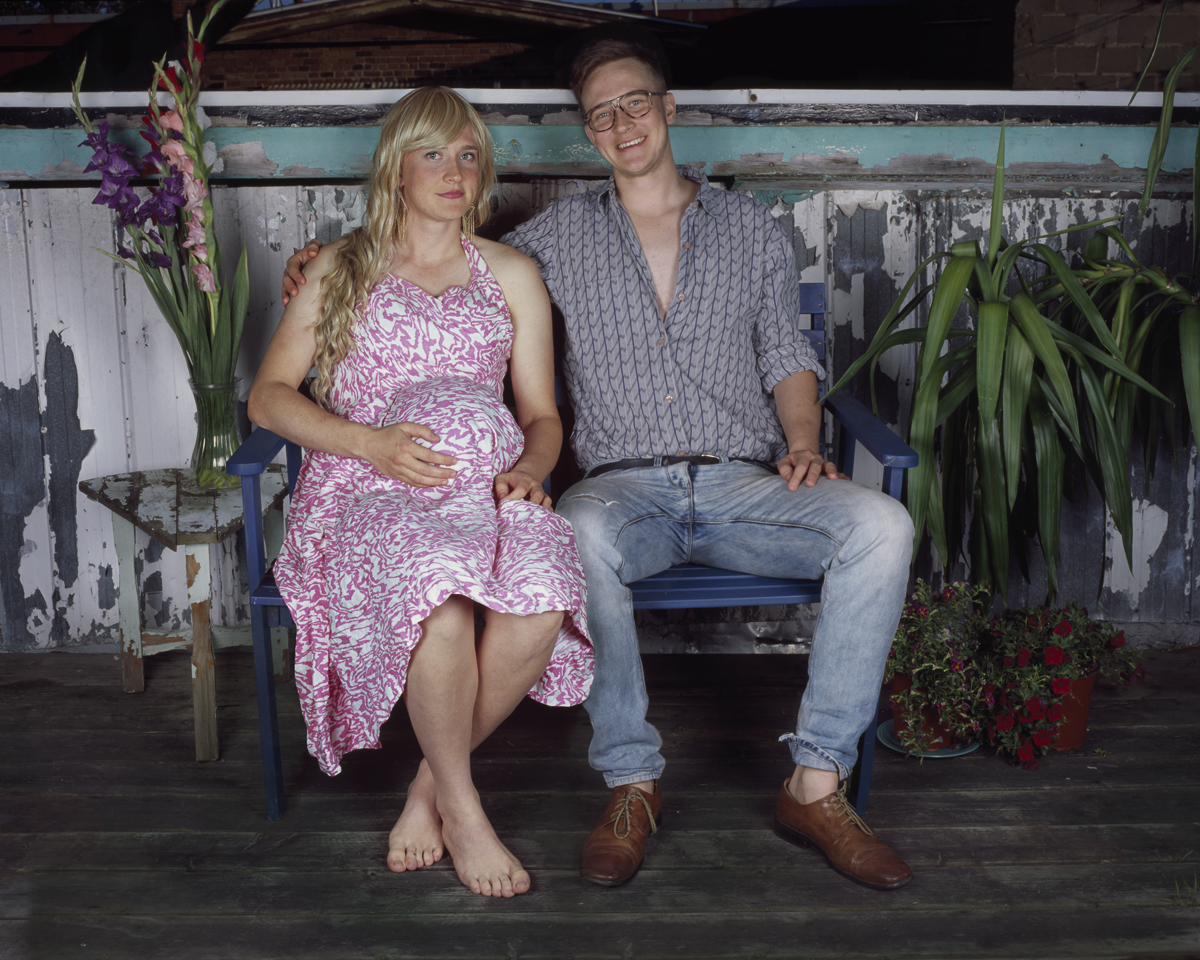
JJ Levine
Montreal, Canada
Alone Time
Alone Time is a series of brightly coloured photographs of couples sharing intimate interactions of domestic life; however, each “couple” proves to be a single model, appearing as both the male and female character in the same frame. By demonstrating an individual body’s capacity to engagingly and believably embody two genders, my project questions the mainstream depiction of binary gender roles. This conceptual decision to double the gender presentation of a single body challenges normative ideas surrounding gender presentation and instead implies that gender expression can be fluid and multiple. As well, through the technical aspects of my work, I challenge representational tropes: while the individual photographs are shot on slide film, scanned, layered, and digitally collaged to create the final illusion of “two people,” no aspect of the subjects’ genders are digitally altered – the images are successful because they are visually convincing without manipulation of the subjects’ gender markers through means other than makeup, costume, and pose, further emphasizing the notion that gender is malleable. Alone Time is simultaneously visually confusing/amusing, thought provoking, and highly aesthetic.
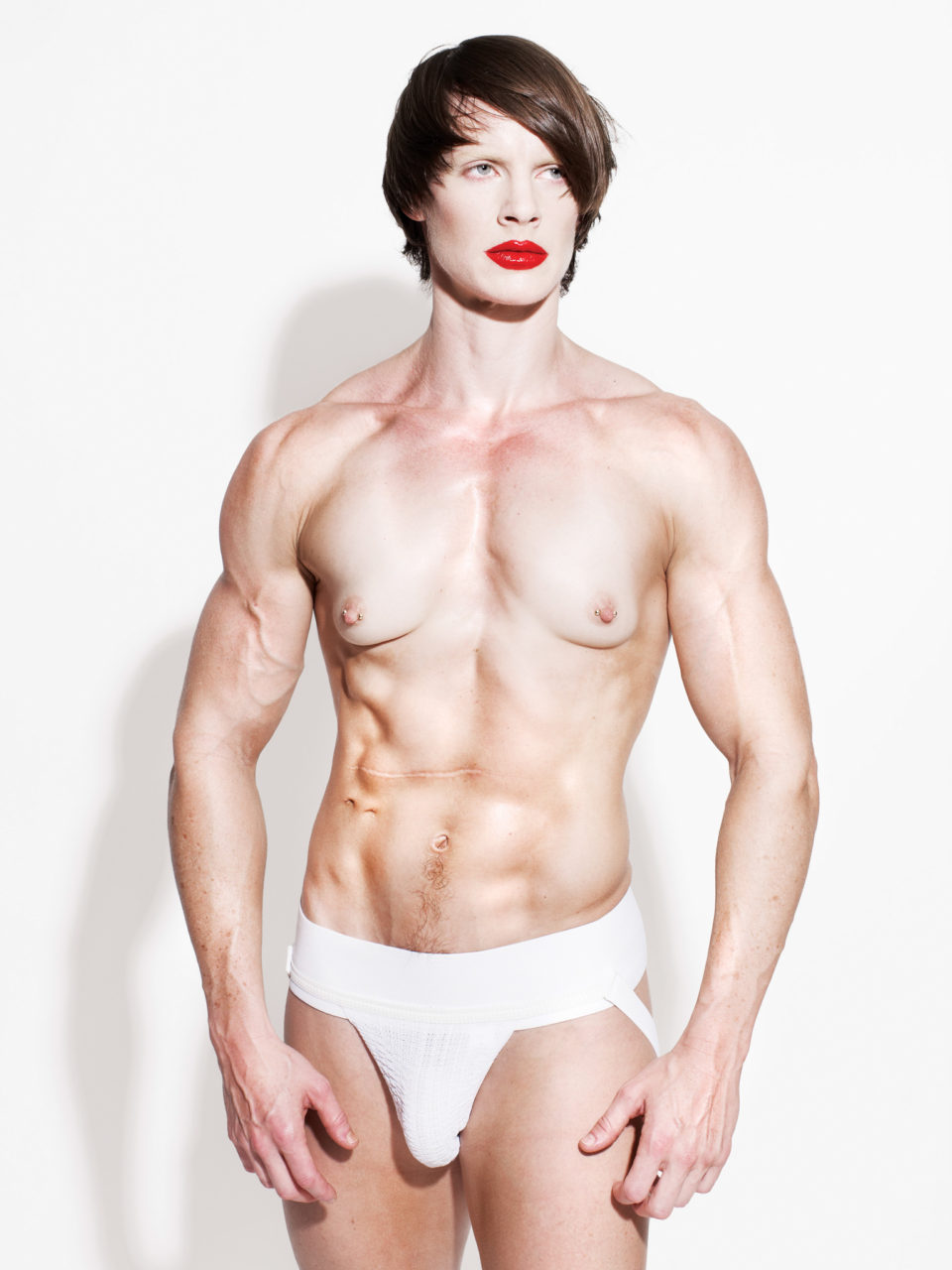
Cassils
Canada / Based in Los Angeles
Cuts: A Traditional Sculpture
Cassils’ work Cuts: A Traditional Sculpture is a reinterpretation of Eleanor Antin’s seminal 1972 performance Carving: A Traditional Sculpture. As opposed to Antin, who dieted for 45 days and documented her body daily, Cassils used a mastery of body building and nutrition to gain 23 pounds of muscle over the course of 23 weeks. Instead of the traditionally feminine act of weight loss, Cassils transforms into a hyper muscular masculine form. The term cut is taken out of the realm of the surgeon’s knife by showcasing the “cut” muscular form. Time-lapse photographs are accompanied by a series of pin-up images made in collaboration with photographer Robin Black as homage to the Linda Benglis work Advertisement, 1974. Cassils’ masculine physique replaces Benglis’ double ended phallus, signaling the shift in our cultural landscape and the role that artists like Benglis had in bringing about these changes.
Cassils
Canada / Basée à Los Angeles
Cuts: A Traditional Sculpture
Cuts: A Traditional Sculpture, l’oeuvre de Cassils, est une réinterprétation de la performance « Carving: A Traditional Sculpture » d’Eleanor Antin, datant de 1972, Contrairement à Antin qui a fait un régime draconien durant 45 jours tout en documentant quotidiennement son corps, Cassils s’est servi d’une maîtrise du culturisme et de la nutrition pour prendre 23 livres de muscles en 23 semaines. En opposition à l’acte traditionnellement féminin de perte de poids, Cassils se transforme en une forme masculine hyper musclée. Le mot cut est tiré de l’univers de la chirurgie et du bistouri en présentant la forme musculaire découpée. Des photographies en temps accéléré sont accompagnées d’une série d’images de pin-ups créées en collaboration avec le photographe Robin Black, pour rendre hommage à l’oeuvre « Advertisement » de Linda Benglis en 1974. Le physique masculine de Cassils remplace le phallus double de Benglis, démontrant le changement dans notre paysage culturel et le rôle que des artistes tels que Benglis ont joués dans cette évolution.

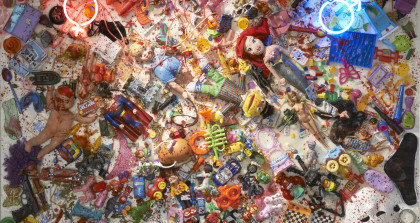
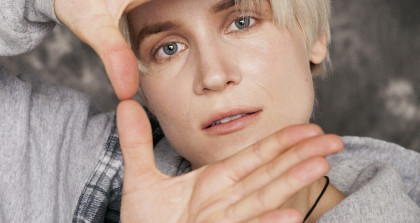


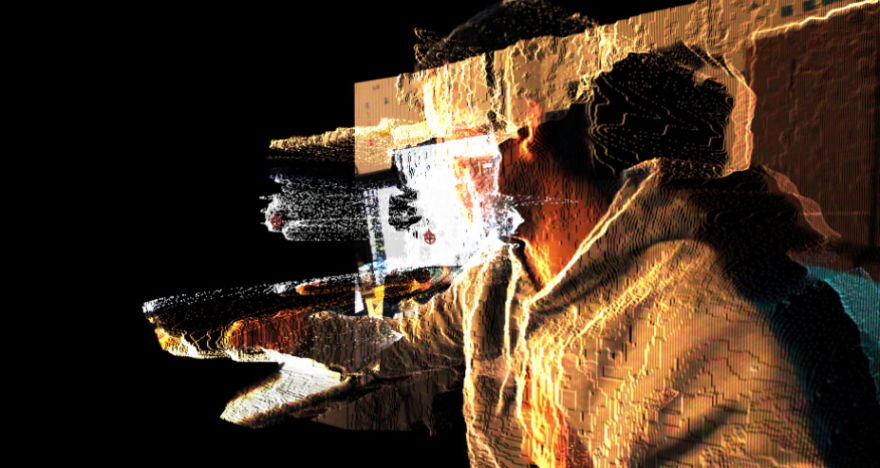

View Comments
No Comments (Hide)